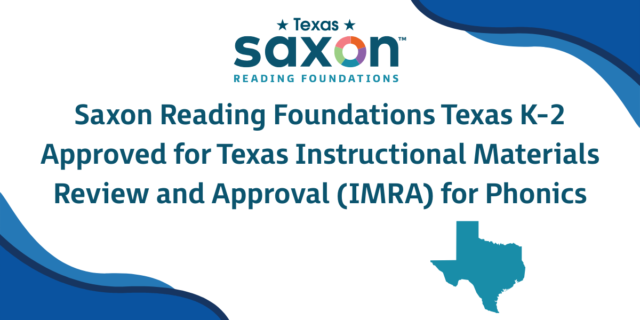
Based on a webinar presented by Chrisie Moritz entitled “5 Ways to Improve Reading Comprehension.” Click here to watch that webinar for free.
In reading, comprehending refers to the thinking readers do before, during, and after engaging with a text. To help students make meaning from reading, educators must facilitate active thinking in ways that support comprehension.
This blog shares five strategies for enhancing your students’ reading comprehension. From thoughtfully introducing a book to the impact of writing about reading, you’ll find ideas that empower students to not just read… but to truly understand, connect, and engage with books.
1. Introducing Books with Purpose
Before students even begin reading, setting them up for successful comprehension is key. A well-prepared introduction can spark students’ curiosity, engage their prior knowledge, and clear up any potential confusion. It’s the ideal time to familiarize students with the structure, language, and vocabulary in the text. Additionally, it’s the perfect opportunity to establish connections between the book and other texts or learning experiences.
A purposeful introduction requires some advance preparation. Ask yourself:
- What might capture the students’ interest?
- What is the book mostly about?
- What are the big ideas or themes the book explores?
- How does the book connect with previously read texts or experiences the students have had?
Thinking through these questions can help provide the scaffolding students might need before reading starts. In this interactive process, consider students’ interests, draw on their background knowledge, and leave room for discovery. The end goal? To create a supportive atmosphere for comprehension, critical thinking, and knowledge building.
2. Nurturing Comprehension
Understanding what we read is the foundation of learning. Our mission is to nurture students’ self-awareness and monitoring skills, enabling them to grasp and question the meaning of the text they encounter. This calls for consistent checks on their understanding, guiding them to spot inconsistencies, and empowering them to make sense of the text.
You can boost students’ progress by teaching, prompting, and reinforcing specific comprehension strategies. Begin by demonstrating a skill, let students try it out, then reinforce their learning through feedback. During reading, invite them to share their thoughts with open-ended questions like, “What are you noticing now?” or “How does this fit with what you thought you knew?” This promotes engagement, supports meaningful discussions, and deepens understanding.
Close reading also offers students the opportunity to study a specific section closely, enhancing their analytical abilities. This approach can be especially helpful for struggling readers, assisting them in transitioning from merely decoding words to genuinely engaging with the text.
3. Cultivating Meaningful Conversations
Discussion is a vital tool in shaping understanding. Talking about what we read generates new insights, challenges our thinking, and elevates comprehension. Through conversation, we can broaden vocabulary, build knowledge, and deepen understanding. The key is not to merely speak at each other, but to cultivate an environment where students learn to develop ideas, engage in respectful disagreement, and gain insights from others’ perspectives.
Encourage meaningful discussions by posing open-ended questions like, “What surprised you the most?” or “How has your thinking changed after reading this?” This also offers an excellent opportunity to urge students to support their ideas with evidence.
4. Writing to Expand Understanding
Writing about reading offers a powerful strategy for enhancing comprehension. Instead of bland book reports, use writing as a tool for reflection and exploration. Writing allows students to focus on specific aspects of the text, closely examine language and vocabulary, and construct evidence-based arguments.
The support students need while writing about reading can vary. For instance, teachers can engage the group in shared or interactive writing, while more advanced learners might benefit from interactive writing sessions or graphic organizers.
One simple way to start this process is summarizing. Techniques like the 5Ws and 1H (Who, What, When, Where, Why, and How) or the Somebody Wanted But So structure can help students identify key characters, their goals, the challenges they face, and how these challenges are resolved.
5. Expanding Vocabulary for Enhanced Comprehension
Enriching vocabulary is crucial for strengthening comprehension. Vocabulary is often grouped into three tiers:
- Tier 1 encompasses everyday spoken and written words.
- Tier 2 includes words that mature language users often use and which appear across various contexts.
- Tier 3 consists of specialized or content-specific words like “metamorphic,” often used in subjects like science or social studies.
Multiple strategies can grow vocabulary understanding. Introduce relevant vocabulary before reading, assist students in deciphering word meanings during reading, and encourage them to apply these new words in their writing. Use resources like glossaries, dictionaries, and online tools to support students. Encouraging discussions around these words will make their meanings clearer and correct usage more likely.
A practical approach is to gather books with similar themes and examine the commonly appearing words. Identify familiar words, words requiring pre-reading explanation, words to discuss post-reading, words to encourage in students’ writing, and words appropriate for vocabulary minilessons. It’s essential to strike a balance between explicit vocabulary instruction and active engagement through reading and discussion. Remember, increasing vocabulary not only improves comprehension but also empowers students, especially struggling readers who often face vocabulary deficits.
These five strategies highlight the interconnectedness of comprehension, conversation, writing, and vocabulary in fostering a deep understanding of texts.
By introducing books thoughtfully, teaching and prompting for comprehension, encouraging conversations around reading, writing about reading, and focusing on vocabulary development, we can provide our students with a toolkit to navigate their reading journey. It’s not only about reading words on a page, but helping students become thinkers, communicators, and lifelong learners.


